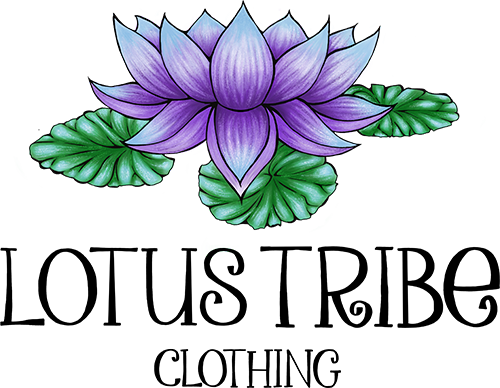If you are like us, you may have practiced Yoga for quite awhile before learning the names of different types of Yoga. You may have wondered, what a Hatha Yoga class is, and if you would want to try it. In this, our second blog of this series, we will take a look at what a Hatha Yoga class is, what Hatha means, where it came from and how to practice it.

What does the word "Hatha" even mean?
As you might remember from our previous blog, there are many different types of Yoga. Some are more spiritual and some have come to be known as "Yoga-As-Exercise." All types of Yoga classes that you might find at a Yoga studio, are essentially what is called "Hatha Yoga." Hatha is a Sanskrit term that can be translated two ways. "Ha" in Hatha means "Sun" and "tha" in Hatha means "Moon." This might make you think of the popular Sun Salutation and Moon Salutation sequences, if you are already familiar with the practice of Yoga asana. The Sun and Moon Salutation sequences are taught in nearly every Yoga Teacher Training and are often the backbone of modern, Yoga-As-Exercise classes. Hatha can also be translated as "forceful" or "willful." This is because Hatha Yoga focuses on more forceful, or physical aspects of Yoga, compared to subtle aspects like meditation.
Hatha can be thought of as a practice to not only purify, but master the physical body. It also has a focus on activating Kundalini energy (A type of divine/spiritual subtle energy that is believed to lay dormant at the base of the spine until activated) as well as the Chakras (believed to be whirling discs that Kundalini energy flows through).

Where did "Hatha" Yoga Come From?
Hatha Yoga comes from India, as do all types of traditional Yoga. Most of the modern, Yoga-As-Exercise, types of Yoga have been developed outside of India. Hatha Yoga comes from the Nath Shaivism (A form of Hinduism which focuses on Shiva), Yogis and ascetics who believe Shiva was the Adiyogi, or the first Yogi. Hatha Yoga was developed during the era known as post-classical Yoga and includes many physical practices. Even though it was developed after the path that came to be known as Raja Yoga, it is often seen as a prerequisite to Raja Yoga. There are many important texts to Hatha Yoga, but the text that formalized and outlined Hatha is the Hatha Yoga Pradīpikā, which was written by Svātmārāma.

Hatha Yoga Practice
So how does one practice Hatha Yoga? Just by going to any old Yoga class offered at their local Yoga studio? Not exactly... Even though pretty much all types of physical Yoga practices and Asanas are included in Hatha Yoga, a complete Hatha Yoga practice has many parts.
Hatha Yoga practices include Asanas, Pranayama, diet, Kriyas, Mudras and Bandhas. The goal of these practices are to cleanse the body of impurifications and to increase the flow of subtle energy (Kundalini) within the body to aid in personal and spiritual development.
- Asana: Asanas are the physical poses one does during a yoga class. The Hatha Yoga Pradīpikā originally listed 84 different Yoga poses. There were other texts from around the same time that also listed 84 Yoga poses, but the poses they included differed. BKS Iyengar listed 200 different Yoga poses in his 1966 book Light on Yoga. With Yoga's more recent global rise in popularity, there are new poses (and styles of Yoga) being added all the time.

- Pranayama: Pranayama or Breath Work is many different types of Yogic breathing techniques. Some forms of Pranayama are slow and some are rapid, depending on their intended goal. Different techniques are used for different reasons, but they all focus on channeling Kundalini energy. Ujjai breathing is a popular type of Pranayama and is commonly used in Yoga classes. It is meant to be linked with movement and poses.

- Diet: In general, a Yogic diet focuses on eating moderately (Mitahara) and eating healthy, mildly flavored/spiced foods. It is practiced to help balance your body and get the most out of your Asanas. Some Yogis also practice Ayurveda (an Indian system of heath and wellness that is based upon the elements and your natural disposition or Dosha), which includes diet. Ayurvedic diets vary, depending on your unique Dosha and often requires abstaining from certain foods.

-
Kriyas: Kriyas, also known as Shatkarmas or Shatkriyas are exercises used for purification and cleansing of the body. Although there are many different kinds of Kriyas, there are six main types and include everything from body manipulation to massage, some types of breath techniques and washing. One Kriya that has become commercially popular, and that you may have even tried, is Neti. Neti is nasal washing system using a pot and is where the popular Neti Pot came from.

- Mudras: You have probably seen images of the Buddha or Shiva (pictured previously in this blog). Ever notice the way they are holding their hands and fingers? These hand gestures are called Mudras and are used for different things. Some purportedly have healing purposes and others represent a virtue. Both Buddha and Shiva often have their hands in the Abhayamudrā Mudra, which represents a state of no fear or fearlessness. The Jnana (wisdom) Mudra is pictured below. It is used to balance the elements of air and fire, as well as aid in the flow of prana during meditation.

- Bandhas: Bandhas are body locks and literally mean "catching hold of." There are many different Bandhas, but the three main Bandhas are Mula Bandha (contraction of the perineum), Uddiyana Bandha (contraction of the rib cage and abdomen) and Jalandhara Bandha (contraction of the chin and chest). Bandhas are often employed in conjunction with breath techniques to aid in the flow of Kundalini energy.

Conclusion
Hatha Yoga is a practice within Yoga that focuses heavily on Asanas (postures), breath techniques and purification of the body. The goal is mastery of the body and the free flow of Kundalini energy to help with meditation and ultimately, self-realization. All forms of physical yoga and most yoga classes offered at Yoga studios are types of Hatha Yoga. If you have practiced Yoga before, there is a good chance that you were practicing Hatha Yoga without even knowing it.

If you have not practiced Hatha Yoga before, what are you waiting for? Go out and try it today! If you are in need of online classes or resources to help you jumpstart your practice, check out our Lotus Tribe community page for free Yoga classes. Or, if you need some Yoga clothes to help you look and feel your best during your practice, Lotus Tribe has you covered. It does not matter if you are a long term Yogi, a Yoga newbie or just Yoga curious, we hope that this blog helped you understand Yoga a little better and that you will get on the mat today!


